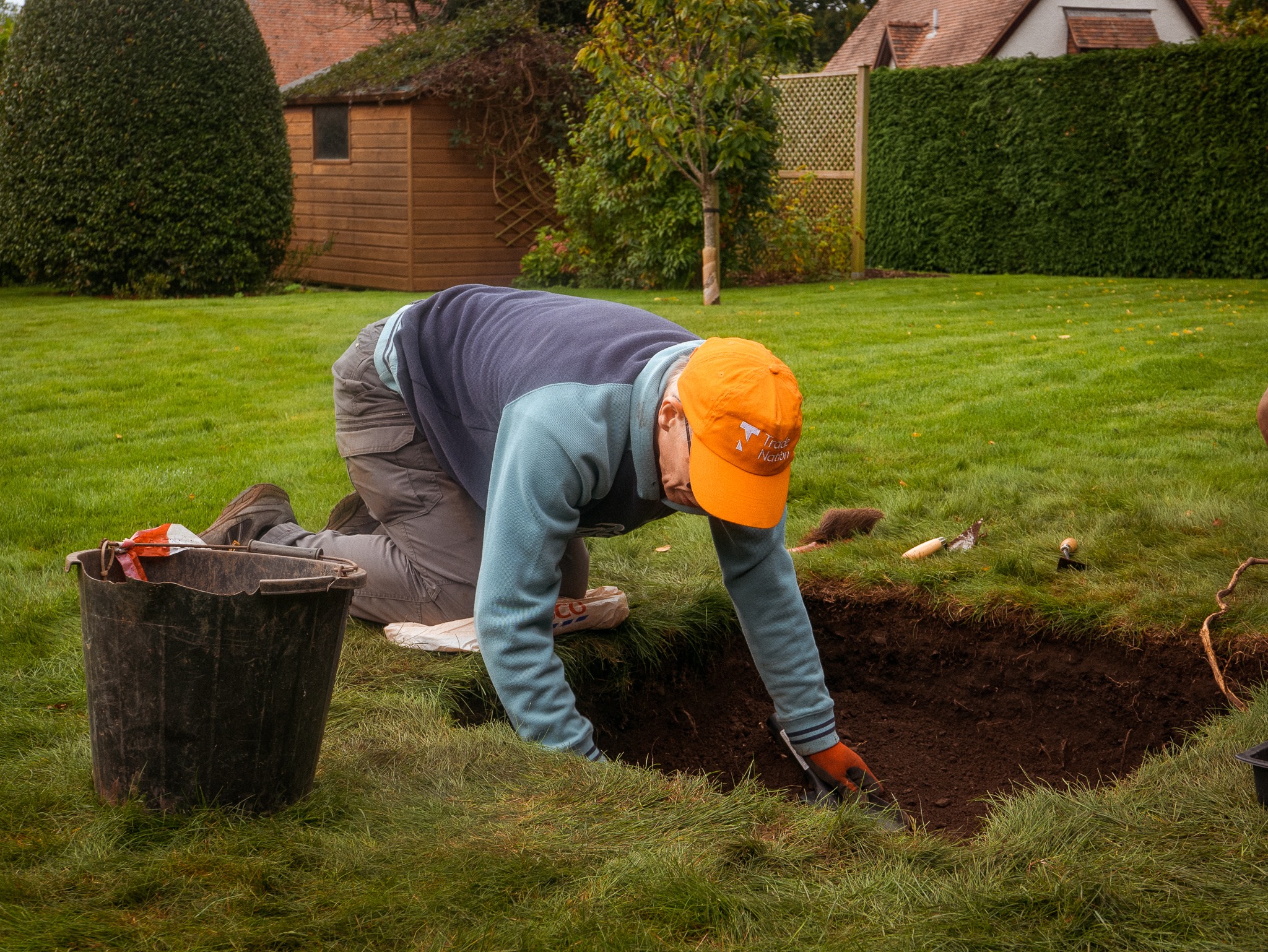Bicknoller Test Pitting


In October, residents of Bicknoller were invited to join QLPS volunteers and professional archaeologists from Past Participate in a programme of archaeological test-pitting across the village.
Test-Pitting involves local residents digging 1m excavations in their own gardens and recording them archaeologically. It is a well-used technique for both engaging communities in archaeological research and for providing information in occupied areas which other methods cannot access.
Specific research aims for the weekend included identifying evidence of prehistoric activity within the area now occupied by Bicknoller and gaining insights into the foundation and development of the village, not least in helping to establish whether the village was an Anglo-Saxon or post-Conquest foundation.
The QLPS engaged Past Participate a community interest company specialising in combining high quality archaeological research with high quality community participation, to lead the investigations. Under guidance from Dr Anne Teather, Jim Rylatt and Dr Hayley Roberts, the weekend gave residents of Bicknoller the opportunity to learn archaeological skills of excavation, and identifying and recording archaeological finds and contexts. Perhaps most importantly, their endeavours have helped add to our understanding of the historic development of their own village.
11 Test pits were opened across Bicknoller and produced a substantial array of finds. As expected, the upper layers produced large amounts of post-medieval pottery, but medieval pottery and prehistoric flints were also recovered. These finds are now being professionally analysed and mapped in readiness for a final report on the excavations, but early indications appear to confirm Bicknoller’s origins as a planned twelfth century village.



